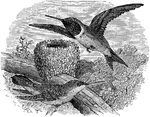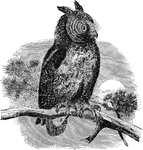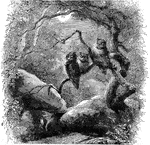Clipart tagged: ‘solitary birds’

Ruby-throated Humming-bird
"Trochilus colubris. Ruby-throated Humming-bird. Tail forked, its feathers all narrow and pointed; no…

Screech Owl
Strix flammea, the nocturnal White Screech-, or Barn Owl, is orange-buff above, with brown, grey and…

Screech Owl
Scops. Little Horned Owls. Screech Owls. Like the miniature Bubo in form (all our species under a foot…

Screech Owls
"Scops. Little Horned Owls. Screech Owls. Like the miniature Bubo in form (all our species under a foot…